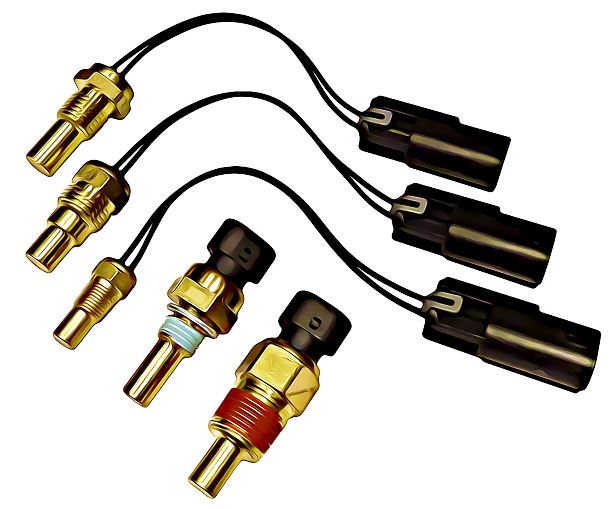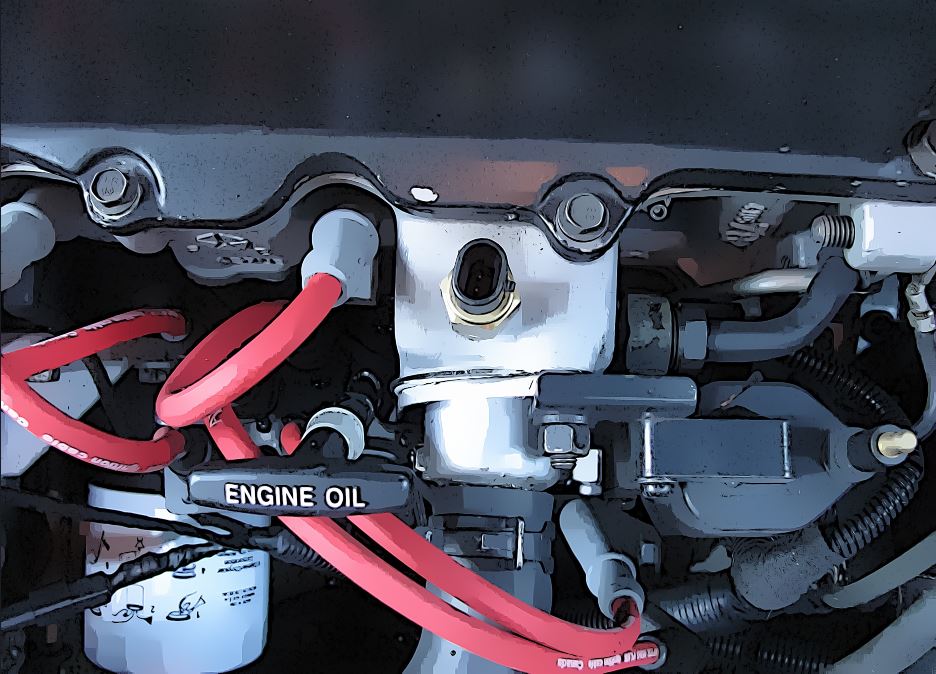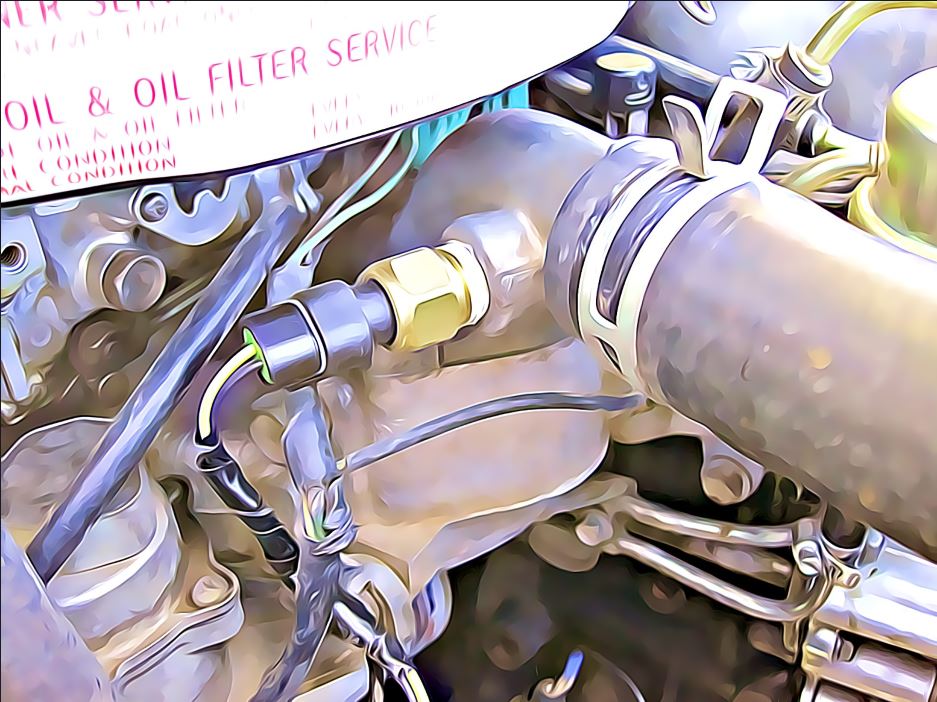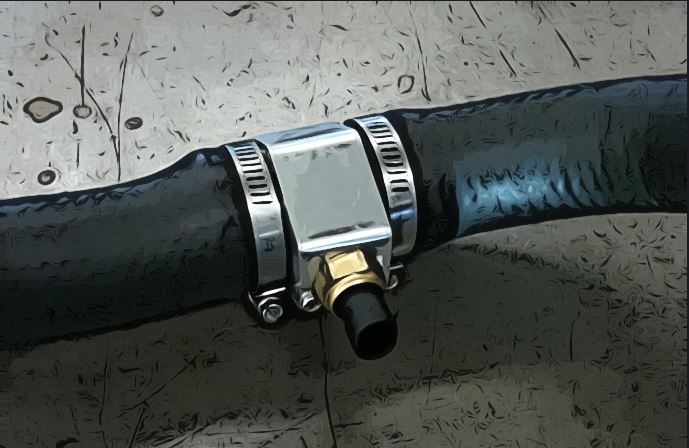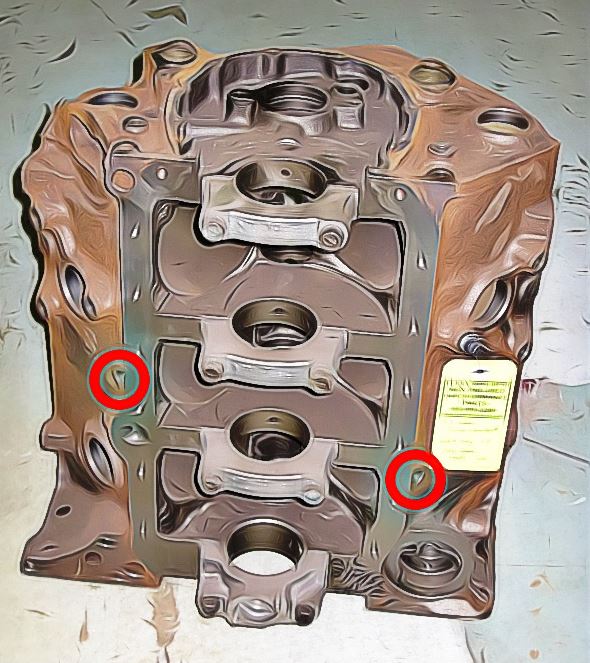Temperature Sensor Installation Guide
Now that I have decided on the best electric fan controller out there, where do I install that sensor?
The Basics
The HPC radiator fan control module uses a temperature sensor to get an accurate reading of the engine coolant temperature. The sensor is a 2 wire sensor that is just like a factory coolant temperature sensor.
This sensor should be installed in the coolant passage of the engine in an area of moving coolant - you don't want to choose a stagnant area or the readings will be lower and slow to react. If you are unsure what we mean by stagnant coolant read more about that further down in this article about where NOT to install your sensor. All HPC fan control kits come with a 3/8"NPT sensor but HPC also offers coolant temperature sensors in many imperial and metric thread types for different applications and even offers "Hybrid" or dual purpose sensors that go into the factory sensor port and output a signal both to the HPC module and also to the factory computer.
Where do I Install the Sensor?
In the Engine
Many engines have a spare port in the coolant system in the cylinder head or intake manifold intended for bleeding the system. Make sure this is in a location where the coolant will be flowing so the sensor gets an accurate signal. Typically a port right near the thermostat housing is ideal.
If there is no spare port in the engine it may still be possible to add a sensor. You can purchase thermostat housings or water outlet with ports for some engines. Alternatively if the OEM intake manifold or thermostat housing has enough space and is thick enough it can be drilled and tapped to accept a sensor.
In the Radiator End Tank
Some radiators have ports in the tanks, particularly European cars and some aluminum aftermarket radiators. Make sure to put the sensor in the "hot" side of the radiator. Double check the port in your radiator is actually going into the coolant and not for an auxiliary transmission or oil cooler within the radiator. Many 1980s-1990s European cars used factory temperature switches in the radiator to control their fans. These will often be metric ports and may fit one of the HPC metric threaded sensors.
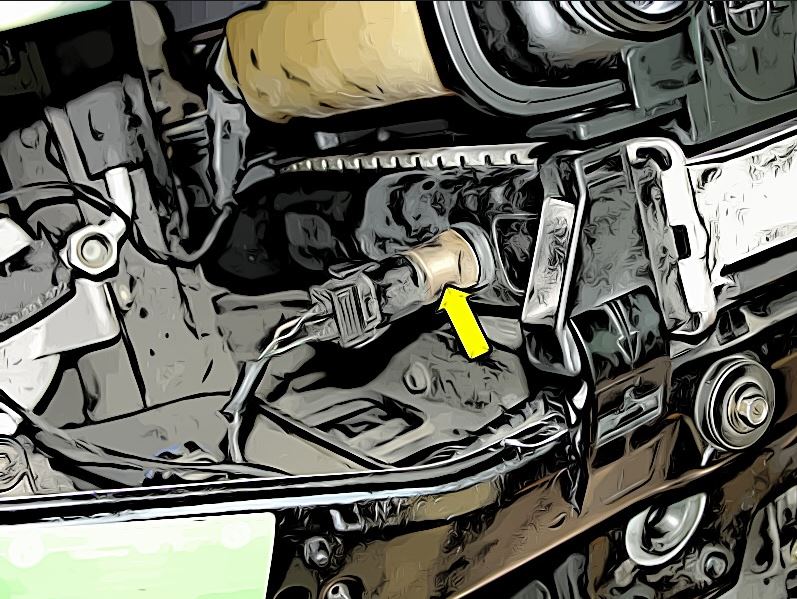
In the Radiator Hose
There are many different radiator hose adapters out there so chances are you will fine one that fits your radiator hose size. These typically have one or more port in them for adding sensors. Make sure you install this in the upper radiator hose to ensure the sensor in exposed to hot coolant, not the return side going to the engine. Simply match up your hose inside diameter to an adapter and the sensor thread size you need.
In the Heater Hose
First a warning - if your vehicle has a heater control valve that stops coolant flow you cannot install the sensor in the heater hose. A heater control valve is a device that shuts off the flow of coolant to the heater core when you are not asking for heat or when using the air conditioning. You can identify these by following the path of the hoses, they will either be cable operated, vacuum operated or electric solenoid controlled.

There are heater bypass valves that still allow coolant to flow when
they are off, but just bypass the heater itself. These are typically
4-port valves and you can install the sensor in the supply hose on these
applications.
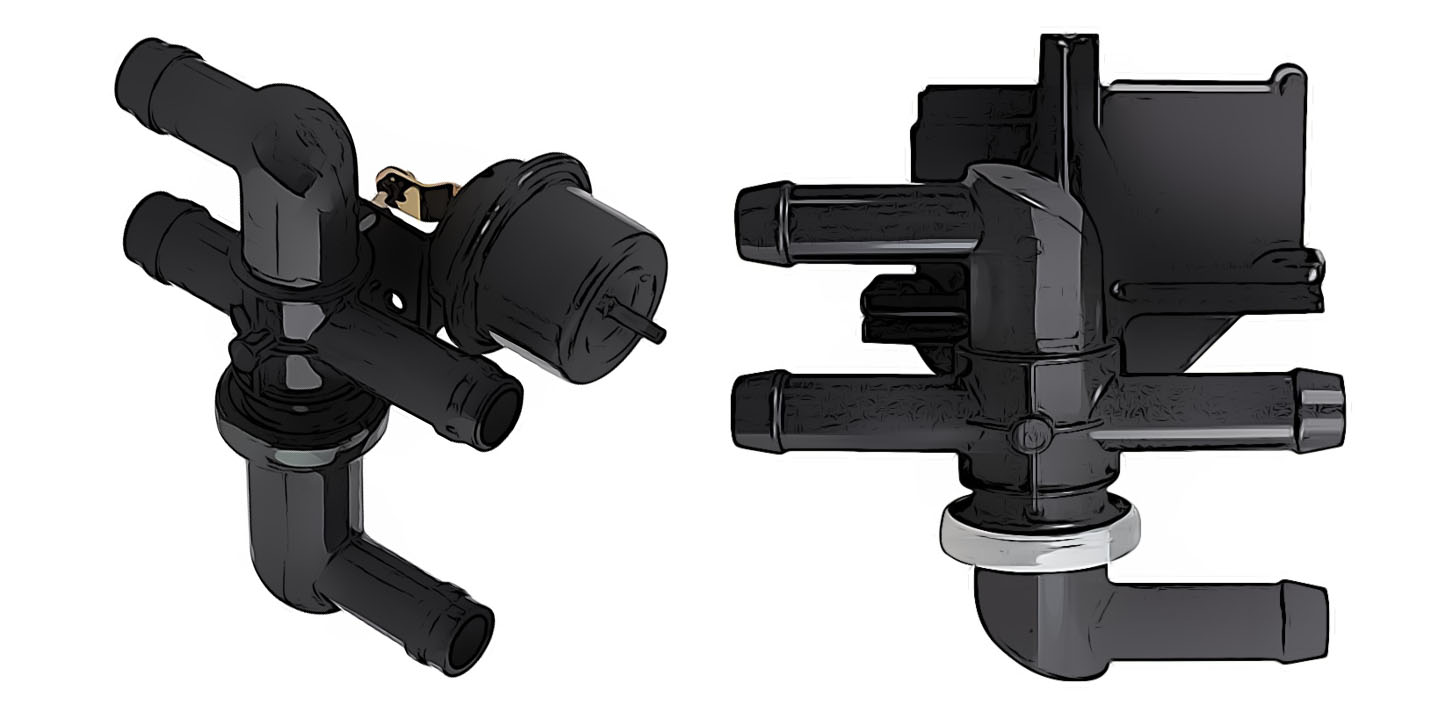
Assuming coolant is constantly flowing to your heater core you can then install a tee in the supply hose (the hot side hose) to install your sensor. There will always be coolant flowing past the sensor and as long as it is on the hot side then the coolant will match the engine temperature. A smaller diameter radiator hose adapter can be used for this, or a tee fitting can easily be constructed from plumbing parts at your local hardware store. The most basic would consist of a 3/8"NPT tee fitting and two barbed fittings that match the diameter of your heater hose.
In the Bypass Hose
Before you tee into the bypass hose you will want to examine how the cooling system of your engine works. On some engines there is a bypass hose between the cylinder head and the water pump that allows a constant bypass of coolant to ensure coolant is moving even if the thermostat is closed. If your engine works like this you may be able to tee in your sensor to the bypass circuit. However, some engines do not constantly bypass, they may have a thermostat which switches off the bypass as it opens up flow to the radiator. Also many engines never came with a bypass hose, instead they relied on the heater hoses to carry coolant to the heater core and that serves as the thermostat bypass.
In the Factory Sensor Location
If you have a factory coolant temperature sensor in your engine and no good options for adding another sensor you may want to check our our dual purpose or "Hybrid" sensors. We have sensors for most GM, Ford and many Japanese models including Suzuki, Toyota and others. These sensors go into the factory port and use the factory style threaded body but have two connectors coming out of them. One plugs into the OEM harness and the other goes to the HPC module. This is a simple way to install your sensor. Check out the product page for the aftermarket equivalent part number to find your application. For example the HPC part number 102029 is equivalent to a "TX40" sensor. Looking in online parts catalogs we can see this sensor would be correct for many applications from a 1995 Suzuki Sidekick 1.6L to a 2002 Toyota Tacoma or even a 2015 Lexus IS350 among many other applications.
Where NOT to Install the Sensor?
Do not install 2 sensors using a tee fitting. There will be no coolant flow past the sensor tips and the readings will lag severely. In some cases this can also create an air pocket around the sensors. This works for oil pressure sensors but not temperature sensors.
Do not stack multiple reducer bushings or use large bushings. Reducer bushings may take the sensor out of the path of moving coolant and instead will be in stagnant coolant. Look for a "face" bushing if you need a bushing but want to keep the sensor probe in the coolant path.
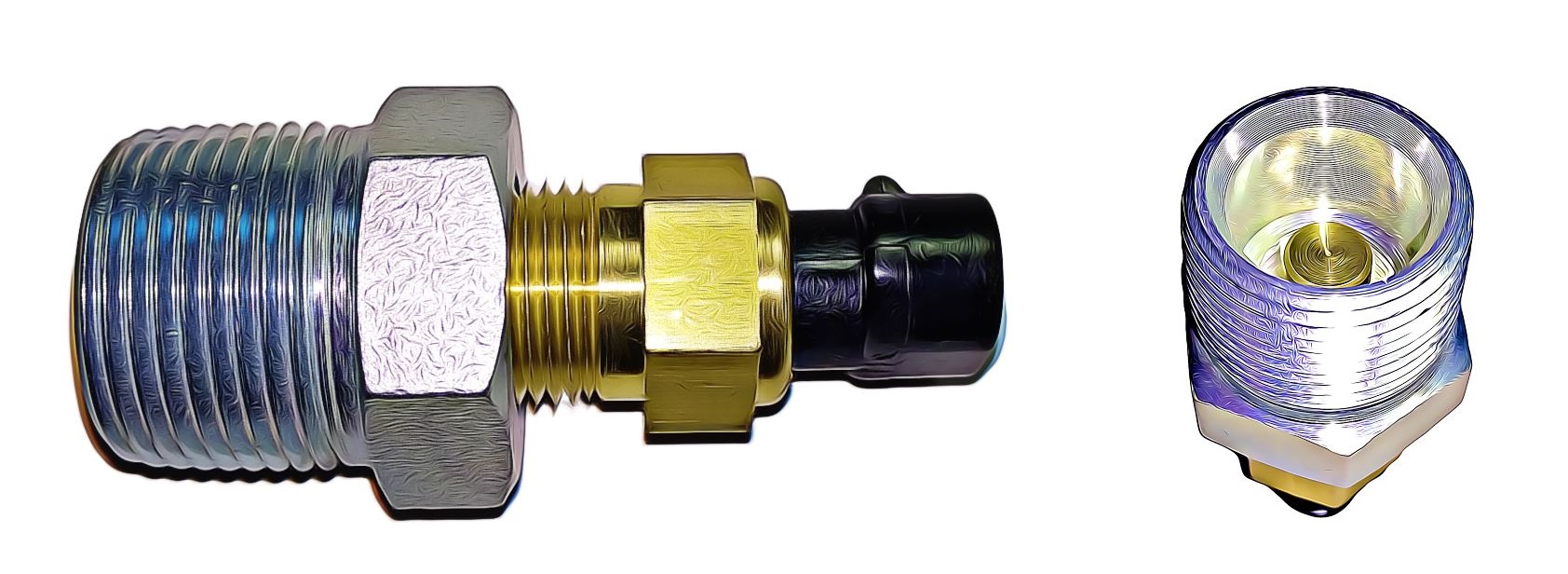
Do not install your sensor in the block drain port if its in the bottom back corner. There is typically almost no flow past this point as it is in the far back bottom corner. Additionally the temperature recorded here will be substantially colder than what would be observed in the cylinder head.


